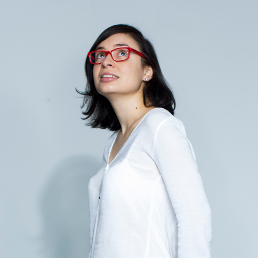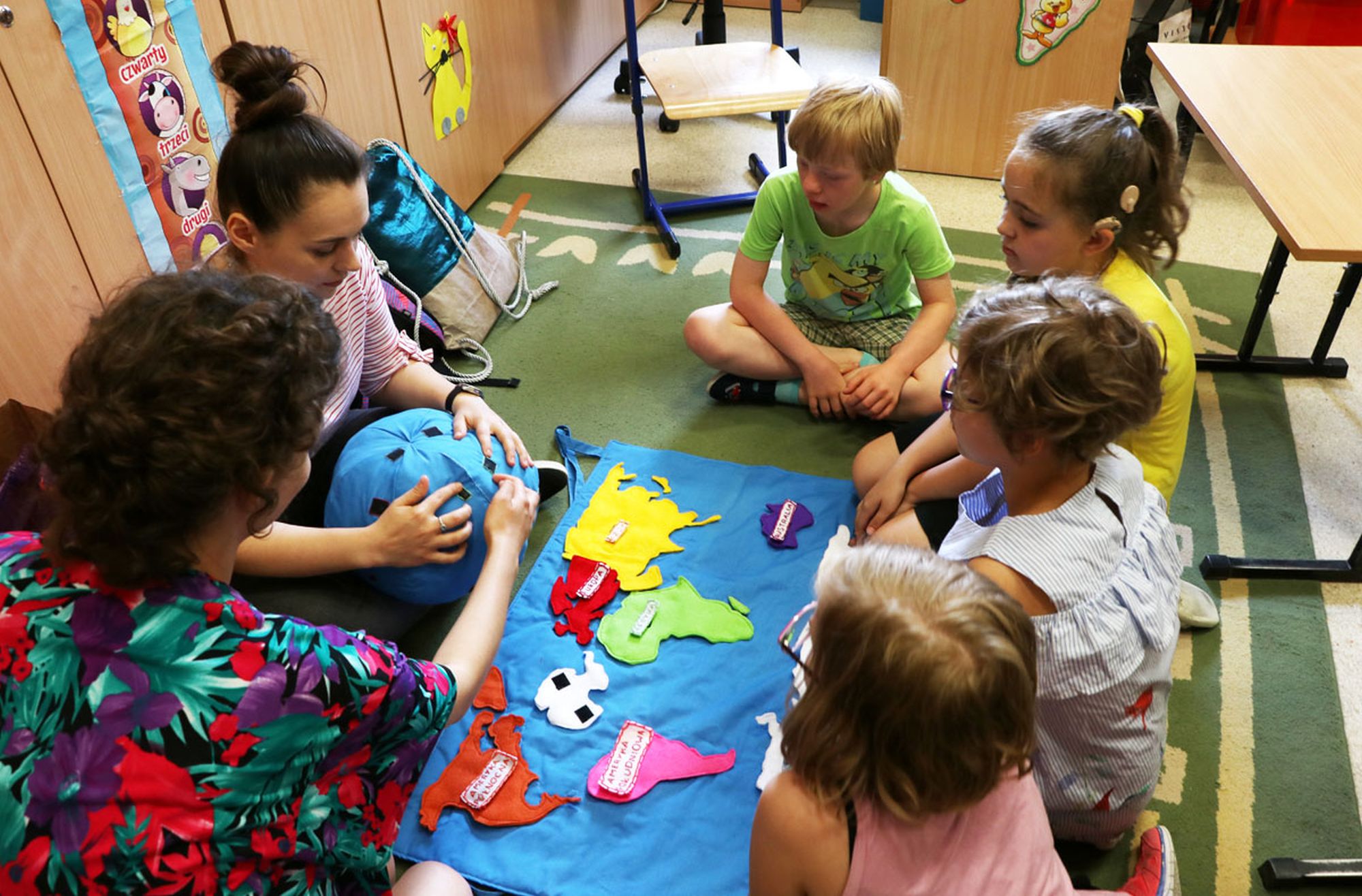For children suffering from deafness or hearing impairment communication with the speaking and hearing world poses many difficulties. Therefore learning a language may be overwhelming. Specially designed teaching aids may prove invaluable in this process. For example, the tools designed by students of SWPS University’s Graphic Design in Wrocław, which help the hearing impaired find their way in the world full of sounds. The “Design without Words” and “Microworlds” projects exemplify socially responsible design that takes into account special needs of people with disabilities.
Problem
Difficulties in learning language skills in deaf and hearing impaired children
Learning needs of deaf and hearing impaired children are very specific. From birth, these children experience limited and obstructed communication with the surrounding environment resulting in delayed cognitive development. Learning a language that the hearing people use, understanding the words and the complicated links between the parts of speech, requires unimaginable effort. The hearing impaired children often lack special learning aids that might help them learn a language. Therefore, they often get discouraged at an early stage of language acquisition, which deepens the exclusion of the hearing impaired form the hearing world.
How can the language learning process be improved for the hearing impaired? What teaching aids do they need? Can deaf children learn through play?
Solution
“Design without words” and “Microworlds” - designing special games and teaching aids
Students of SWPS University’s Graphic Design program, under the guidance of Małgorzata Ciesielska, not only designed teaching aids and educational toys for hearing impaired children, but also participated in the production process of these objects.
While working on the “Design without Words“ project in 2019, students collaborated with teachers of the South Silesia Special Education Centre No. 12 for the Hearing Impaired in Wrocław and observed lessons conducted there to better understand the actual education needs of the hearing impaired children. The collaboration resulted in the production of the following teaching aids:
- domino – a teaching aid that helps kids learn shapes and colors
- continents – a teaching aid that makes learning the names of continents and their location on the globe easier
- an abacus that helps children learn counting form 0 to 100
- coto – an educational game that helps kids learn names of shapes and colors
- nana – an educational game that helps children understand spatial relationships and build sentences with prepositions
- word drawer – an educational toy that helps children understand categories and different notions
- zygzle – an educational aid for children 7 to 12 years old that supports learning of Roman numerals
- a board for preschool kids for checking attendance and learning days of the week
- a teaching aid for preschool children that helps them learn kinship terminology and names of social roles.
Some of the teaching aids were manufactured in cooperation with the PILCH Company from Ustronie, which specializes in the production of ecological educational toys.
The following year, the idea of creating useful teaching aids was developed further in the “Microworlds” project”. The teaching aids developed for children with disabilities during the second project included:
- let’s build this sentence – a teaching aid that helps hearing impaired children learn syntax and grammar
- a map of Poland – a puzzle map including topography with elevation, selected micro-regions, and a set of symbols characteristic for certain areas
- counting to 1,000 – a teaching aid for memorizing names of hundreds and supporting visualization of numbers from 100 to 1,000
- counting to 10 – a teaching aid for preschool children that helps them learn numbers from 1 to 10
- simple sentences – a teaching aid that helps hearing and visually impaired children learn the syntax of basic sentences
- stozik – an educational puzzle that helps hearing impaired kids learn names of basic geometric shapes.
Why?
We promote openness in education and design
Teaching of hearing impaired children, especially in its early stages, requires a special approach and methods aligned with the needs arising from the students’ impairment. Modern schools should be sensitive to special needs of pupils with disabilities. Objects created by students of SWPS University’s Graphic Design program will help deaf and hearing impaired children in their cognitive development and the acquisition of skills indispensable for living in society. The teaching aids designed by our students are excellent examples of thinking outside the box. They prove that consulting users with disabilities and their teachers has resulted in the design of better and more effective teaching aids for students with special needs.

Coordinator of the “Design without Words” and “Microworlds” projects. She is a designer, researcher, teacher and tutor. Professionally she collaborates with NGOs that focus on education. She graduated from the University of Silesia and the Academy of Fine Arts in Warsaw. She teaches theory and practice of design and visual communication design at the Graphic Design program at SWPS University in Wrocław. She researches the impact of graphics in educational materials on cognitive load in children.

